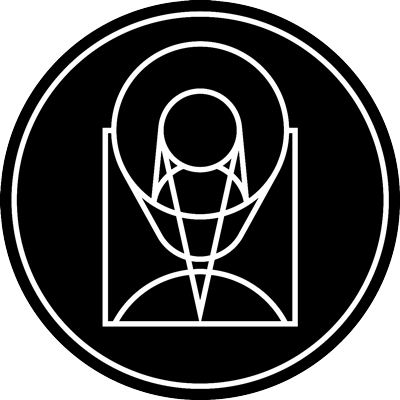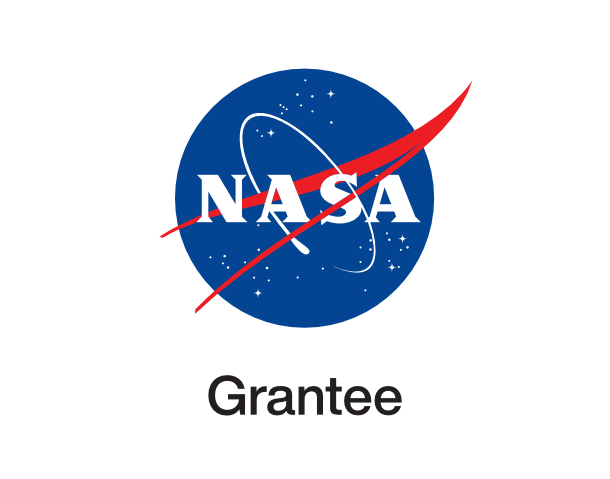Peering into the Core of Globular Cluster Omega Centauri

stsci_2001-33a October 4th, 2001
Credit: NASA and The Hubble Heritage Team (STScI/AURA)
Astronomers have used NASA's Hubble Space Telescope to peer into the center of a dense swarm of stars called Omega Centauri. Located some 17,000 light-years from Earth, Omega Centauri is a massive globular star cluster, containing several million stars swirling in locked orbits around a common center of gravity. The stars are packed so densely in the cluster's core that it is difficult for ground-based telescopes to make out individual stars. Hubble's high resolution is able to pick up where ground-based telescopes leave off, capturing distinct points of light from stars at the very center of the cluster. Omega Centauri is so large in our sky that only a small part of it fits within the field of view of the Wide Field and Planetary Camera 2 (WFPC2) on the Hubble Space Telescope. Yet even this tiny patch contains some 50,000 stars, all packed into a region only about 13 light-years wide. For comparison, a similarly sized region centered on the Sun would contain about a half dozen stars. The vast majority of stars in this Hubble image are faint, yellow-white dwarf stars similar to our Sun. The handful of bright yellow-orange stars are red giants that have begun to exhaust their nuclear fuel and have expanded to diameters about a hundred times that of the Sun. A number of faint blue stars are also visible in the image. These are in a brief phase of evolution between the dwarf stage and the red-giant stage, during which the surface temperature is high. The stars in Omega Centauri are all very old, about 12 billion years. Stars with a mass as high as that of our Sun have already completed their evolution and have faded away as white dwarfs, too faint to be seen even in the Hubble image. The stars in the core of Omega Centauri are so densely packed that occasionally one of them will actually collide with another one. Even in the dense center of Omega Centauri, stellar collisions will be infrequent. But the cluster is so old that many thousands of collisions have occurred.
Provider: Space Telescope Science Institute
Image Source: https://hubblesite.org/contents/news-releases/2001/news-2001-33
Curator: STScI, Baltimore, MD, USA
Image Use Policy: http://hubblesite.org/copyright/

- ID
- 2001-33a
- Subject Category
- C.3.6.4.2
- Subject Name
- Omega Centauri
- Credits
- NASA and The Hubble Heritage Team (STScI/AURA)
- Release Date
- 2001-10-04T00:00:00
- Lightyears
- 17,000
- Redshift
- 17,000
- Reference Url
- https://hubblesite.org/contents/news-releases/2001/news-2001-33
- Type
- Observation
- Image Quality
- Good
- Distance Notes
- Distance in Lightyears
- Facility
- Hubble, Hubble, Hubble
- Instrument
- WFPC2, WFPC2, WFPC2
- Color Assignment
- Blue, Green, Red
- Band
- Ultraviolet, Optical, Optical
- Bandpass
- U, Ha, R
- Central Wavelength
- 336, 656, 675
- Start Time
- Integration Time
- Dataset ID
- Notes
- Coordinate Frame
- ICRS
- Equinox
- 2000.0
- Reference Value
- 201.70352586333, -47.48185542972
- Reference Dimension
- 1474.00, 1474.00
- Reference Pixel
- 911.66455180819, 596.29658906674
- Scale
- -0.00002769084, 0.00002769084
- Rotation
- -36.25105813812
- Coordinate System Projection:
- TAN
- Quality
- Full
- FITS Header
- Notes
- World Coordinate System resolved using PinpointWCS 0.9.2 revision 218+ by the Chandra X-ray Center FITS X FITS Y EPO X EPO Y 775.46 880.52 785.90 544.19 944.00 850.03 939.84 619.81 1038.99 841.44 1019.51 668.42 1142.11 854.07 1100.02 741.97 944.46 1112.28 784.28 831.70 876.51 1007.25 790.39 705.10 Center Pixel Coordinates: 737.00 201.71268657016 737.00 -47.48156000200
- Creator (Curator)
- STScI
- URL
- http://hubblesite.org
- Name
- Space Telescope Science Institute Office of Public Outreach
- outreach@stsci.edu
- Telephone
- 410-338-4444
- Address
- 3700 San Martin Drive
- City
- Baltimore
- State/Province
- MD
- Postal Code
- 21218
- Country
- USA
- Rights
- http://hubblesite.org/copyright/
- Publisher
- STScI
- Publisher ID
- stsci
- Resource ID
- STSCI-H-p0133a-f-1474x1474.tif
- Resource URL
- https://mast.stsci.edu/api/latest/Download/file?uri=mast:OPO/product/STSCI-H-p0133a-f-1474x1474.tif
- Related Resources
- http://hubblesite.org/newscenter/archive/releases/2001/33
- Metadata Date
- 2022-07-06T00:00:00
- Metadata Version
- 1.2
Detailed color mapping information coming soon...















